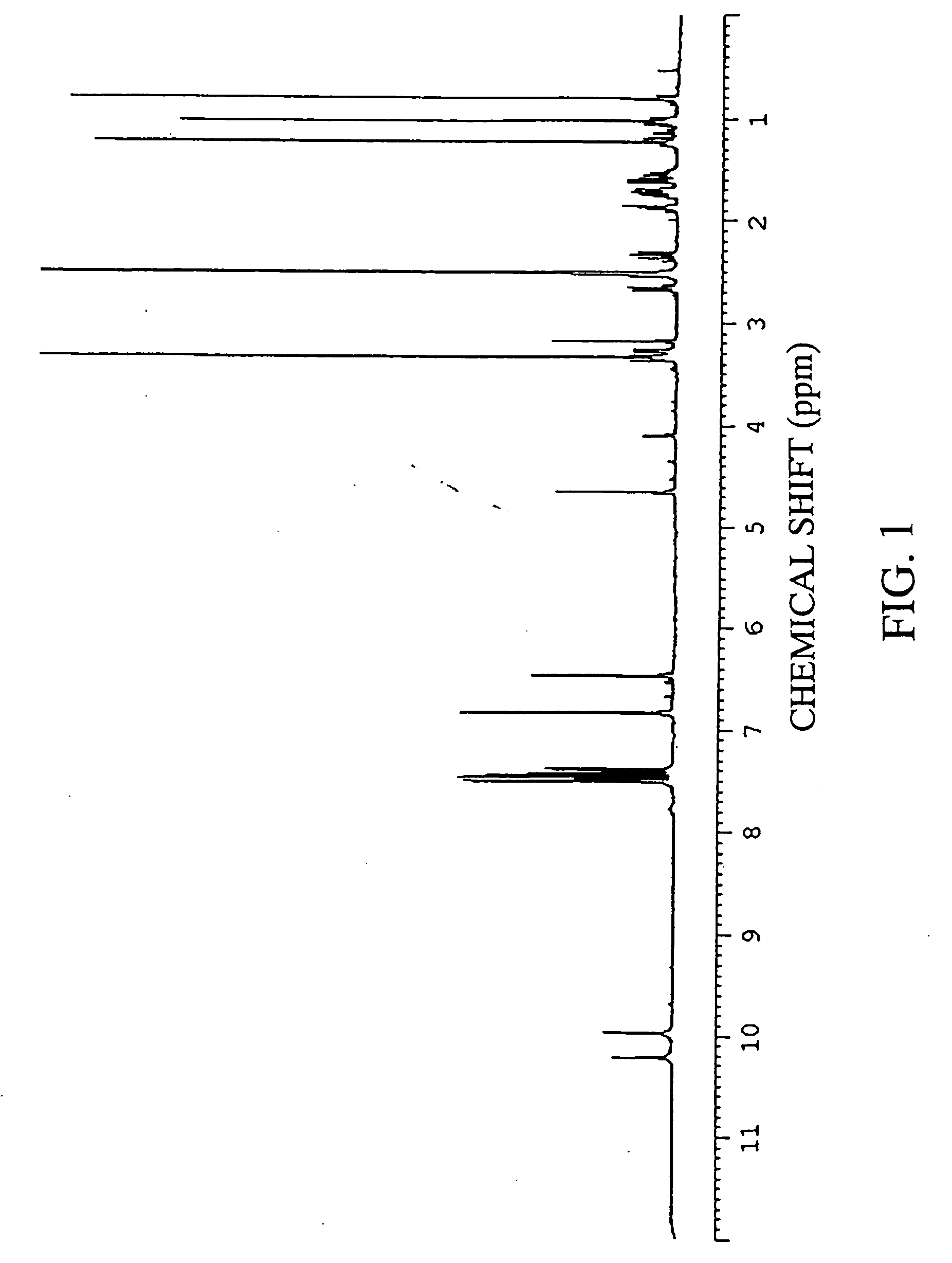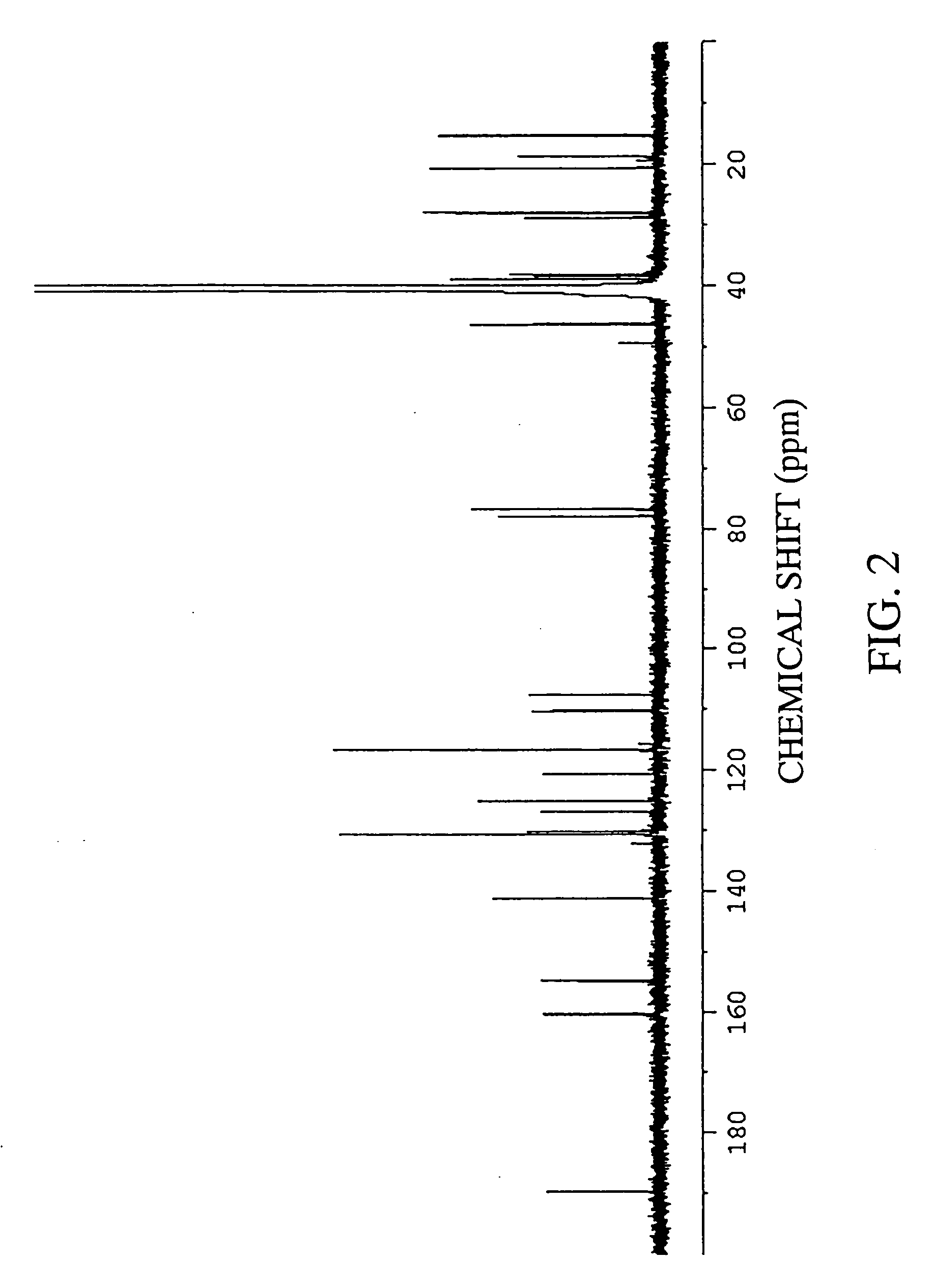Therapeutic agent
a technology of phthalide and phthalide compound, which is applied in the field of therapeutic agents, can solve the problems of inconvenient use, insulin-mimetic action such as anti-diabetic action or anti-obesity action of phthalide compound, and may not find therapeutic effects, etc., and achieve the effect of convenient us
- Summary
- Abstract
- Description
- Claims
- Application Information
AI Technical Summary
Benefits of technology
Problems solved by technology
Method used
Image
Examples
example 1
Preparation of Xanthoangelol
[0228] (1) Fifteen liters of ethanol was added to 5 kg of a dry powder of root portions of Angelica keiskei koidz., and extracted at room temperature for 30 minutes. After suction filtration, the ethanol and the residue were separated. The same procedures were repeated twice for the residue. Thereafter, the ethanol extracts were combined, and the combined extract was concentrated under reduced pressure, to give a concentrate of an ethanol extract.
[0229] (2) The concentrate of an ethanol extract obtained in item (1) of Example 1 was dissolved in 2 L of a 25% ethanol solution, and thereafter fractionated by using reverse phase chromatography. As the resin, Cosmosil 140 C18-OPN (manufactured by Nakalai Tesque, Inc.: 400 mL) was used. The elution was carried out with 1 L of a 30% aqueous ethanol solution, 5 L of a 40% aqueous ethanol solution, 4 L of a 75% aqueous ethanol solution, 3 L of a 100% aqueous ethanol solution in that order.
[0230] (3) The fractio...
example 2
Preparation of 4-Hydroxyderricin
[0233] The silica fraction numbers 10 to 15 obtained in item (3) of Example 1 were collected and concentrated under reduced pressure, and the concentrate was dissolved in chloroform. Subsequently, the recrystallization with hexane was carried out, and the formed precipitates and supernatant were separated. The precipitates obtained were dried, to give 4-hydroxyderricin.
example 3
Preparation of Xanthoangelol H
[0234] (1) The fraction eluted with the 40% aqueous ethanol solution obtained in item (2) of Example 1 was concentrated under reduced pressure, and the concentrate was adsorbed on a silica gel (350 mL). The elution was carried out stepwise with chloroform:hexane at a solvent ratio of 50:1 (960 mL), 40:1 (520 mL), 20:1 (1000 mL), 10:1 (840 mL) and 5:1 (520 mL) in that order. The eluates were fractionated 8 mL each.
[0235] (2) The silica fraction numbers 142 to 164 obtained in item (1) of Example 3 were collected and concentrated to dryness, and the concentrate was dissolved in ethyl acetate. Subsequently, the recrystallization with hexane was carried out, and the formed precipitates and supernatant were separated. The precipitates obtained were dried, to give xanthoangelol H.
PUM
 Login to View More
Login to View More Abstract
Description
Claims
Application Information
 Login to View More
Login to View More - R&D
- Intellectual Property
- Life Sciences
- Materials
- Tech Scout
- Unparalleled Data Quality
- Higher Quality Content
- 60% Fewer Hallucinations
Browse by: Latest US Patents, China's latest patents, Technical Efficacy Thesaurus, Application Domain, Technology Topic, Popular Technical Reports.
© 2025 PatSnap. All rights reserved.Legal|Privacy policy|Modern Slavery Act Transparency Statement|Sitemap|About US| Contact US: help@patsnap.com



